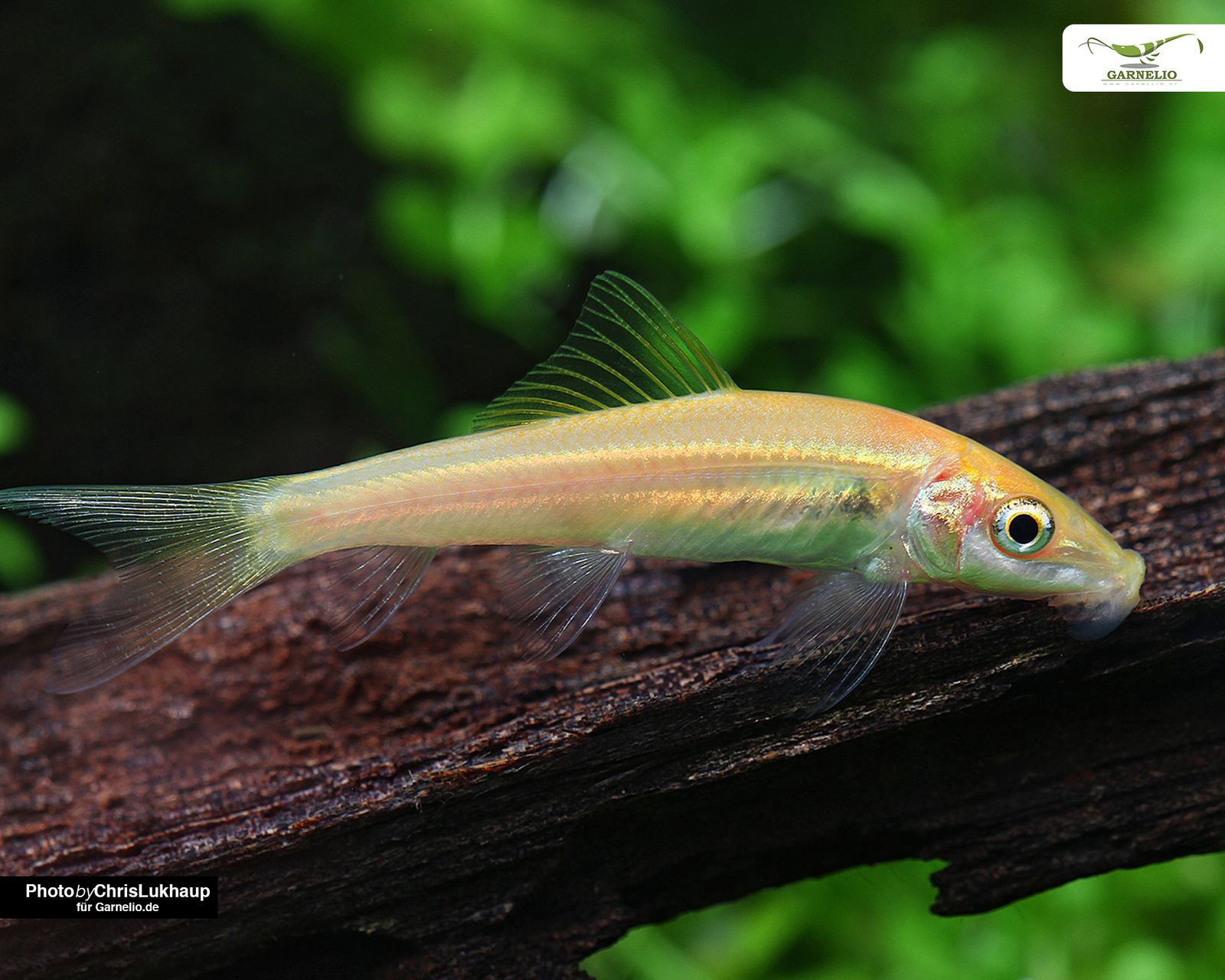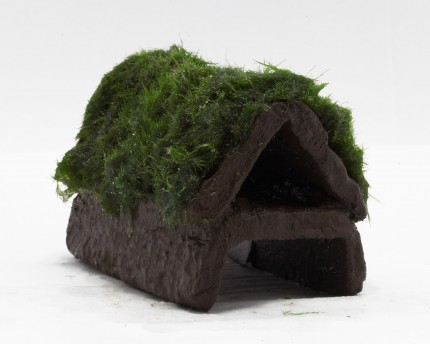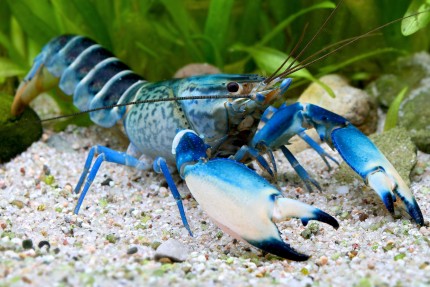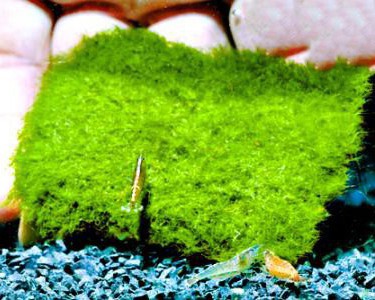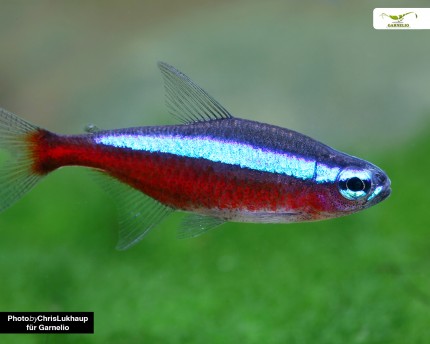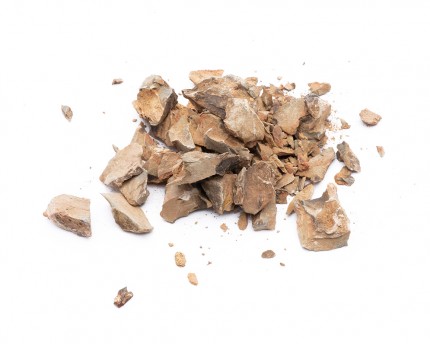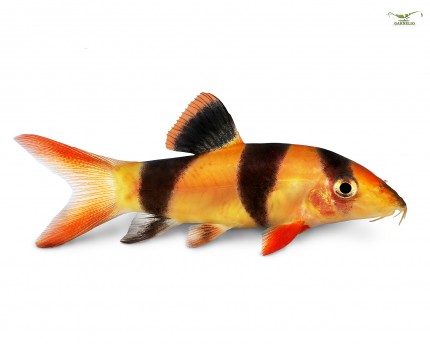Loaches in the aquarium
The great diversity of loaches consists of 11 families, comprising over 120 genera and almost 1200 species. In aquaristics, however, not all of these fascinating fish, which belong to the carp family, are known. Above all, two very specific characteristics are typical of loaches: on the one hand, their under-eye spine, which they can erect when threatened and which protects them from predators, among other things, but also their under-eye sucking mouth, with which they can suck themselves firmly to the substrate even in very large currents. Loaches communicate via clicking sounds, which can occasionally be heard even outside the aquarium.
Loaches originate mainly from European and Asian waters, mainly from waters with very strong currents and oxygen, in which they adhere firmly to the substrate with their sucking mouths and also use this as an aid to movement.
These particular groups are the most common representatives in aquaristics: Spiny loaches (Cobitidae), which almost look like small snakes, clown loaches(Botiidae), which often have the reputation of being small underwater terrorists, and, in addition to the algae-eating sucking loaches (Gyrinocheilidae), the fin suckers (Gastromyzontidae).
What they all have in common is that they are practically impossible to breed in captivity. However, especially in Asian countries, breeding methods involving the hormonal balance of the animals are practised for commercial export, but these will not become established in ordinary aquaristics. At least this can counteract the taking of fish from the wild in order to preserve the wild stocks. In nature, the free-spawning animals migrate upstream in shoals and disperse again after the spawning season. At least in the case of spiny loaches, however, accidental breeding has already been successful in the aquarium.
Among the loaches, too, there are several colourful representatives that look similar depending on their location, but are different species and have not yet been fully researched. It can be assumed that in the future we will be surprised by many more great representatives of these imposing animals, which in their Asian countries of origin are valued above all as food fish.
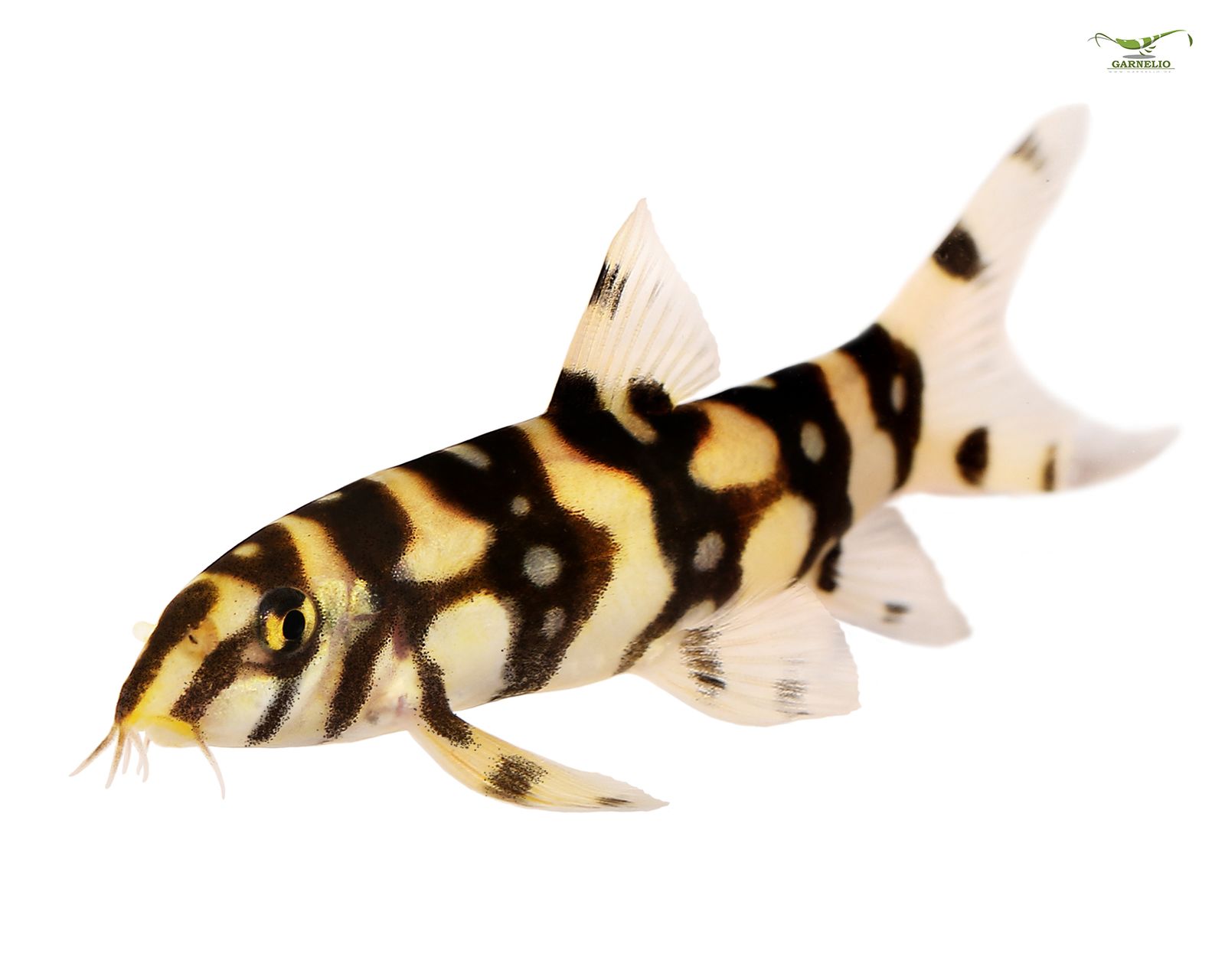
Trivial names and scientific names
Since some loaches look confusingly similar at first glance, it is always advisable to rely on their scientific species names to find out enough about their requirements. In the end, the exact designation of living creatures is always a great help, which is also used internationally in order to be able to classify them correctly and without doubt, because German species names do not always correspond to an optimal translation in another language.
Life expectancy
Loaches in particular are extremely long-lived co-inhabitants that not only grow very large with a body length of up to 30 centimetres, but can also become very old with a life expectancy of between 10 and 20 years, depending on the species. With rather newer species, which are gradually appearing in the hobby, this cannot yet be predicted exactly, but they will probably also have a similar age.
Occurrence in nature
Loaches come from different waters of the earth and therefore prefer different water parameters to feel comfortable in the aquarium. Therefore, we explicitly address these in our shop descriptions. The size of the animals and the aquarium size required also differ. In their natural habitats loaches inhabit fast-flowing and therefore oxygen-rich waters, in which they hold on to roots and stones with their sucking mouths and nibble off growth and coverings, among other things, but they can also move forward in this way and even migrate upstream against the current, as they do especially during spawning time. The bottoms have rather sparse vegetation with sandy or fine gravel material. Loaches also rummage through this in their search for snails or tiny crustaceans, which is why shrimps or dwarf crayfish are not at all suitable for association in the aquarium. They also love to eat aquarium snails, which is why they are often acquired if there is an overpopulation of snails. The water in their habitats is in a soft to medium-hard range, but they also like to retreat into cracks and crevices, especially in the case of territorial disputes, because loaches are extremely communicative and social animals, lower-ranking animals seek protection here. Since they are also very good jumpers and can squeeze into almost any crevice, the aquarium should also be well covered all around. The loaches differ in their comfort parameters, also with regard to temperature and group behaviour, as some animals are more territorial than others. Therefore, before purchasing, you should take a closer look at the respective profile that our offered animals bring with them, so that their aquarium can also be optimally adapted to their needs.
The biotopes of loaches are usually very clean and have a good flow. Therefore, they have difficulty coping with nitrate accumulations and also have a high oxygen demand. The aquarium should therefore be very well filtered and have current. Water changes should be regular and generous. The oxygen content can also be increased with a flow pump, or alternatively with outflow stones. Humic substances should not be neglected either. These can be added with seaweed leaves, brown autumn leaves, but also with cinnamon sticks or alder cones. The liquid version is our Natureholic LiquidHumin.

Foraging and the right food
Especially spiny loaches, but also loaches, rummage through the substrate for food. Therefore, a fine sand substrate is advantageous so that the animals do not injure their sensitive barbels. They not only eat small crustaceans and worms that they find, in the aquarium they also eat the food remains of other fish and do not reject live and frozen food. Since clown loaches in particular have a pronounced preference for snails, they can be offered food snails such as those in our shop. They can also be fed optimally with sinking granules or catfish tablets. Depending on the loach species, however, you should consider whether they prefer plant or animal food. Growth-eating loaches such as sucking loaches can therefore also be fed well with algae plates or boiled and over-broiled vegetables. In any case, the vegetables for the loaches should be free of pesticides and always washed very well beforehand. Most loaches are also crepuscular, so it is best to feed them in the evening. Loaches are generally good, but also hectic eaters that can really go into overdrive as soon as something edible enters the aquarium. Some even swim belly-up on the water surface to catch food from there. Especially with other fish, it is important to make sure that everyone gets their share.
Keeping in the aquarium - group size
Loaches are sociable animals that show a distinct territorial and social behaviour with a pecking and ranking order. However, they need an appropriate group size so that their aggressions, which are part of their character, can be distributed accordingly. At least 6 animals should live together if possible. Loaches are often referred to as underwater terrorists by their keepers, as individually kept animals can very quickly take care of themselves and become real nasties, stressing their fellow fish so much that they become ill or hide so that they are no longer seen. However, if you take into account their species-specific needs, including the right aquarium size and their schooling behaviour, they are not very quarrelsome and usually leave all other aquarium inhabitants alone. In their habitats, they sometimes live in loose, large shoals that move upstream in very large groups, especially during spawning season, and then disperse again. Acquiring a loach only because of an exploding snail population is therefore not a very good idea if the animals cannot be accommodated and a small problem can suddenly mutate into a much bigger one.
Keeping them in the aquarium - the aquarium setup
The aquarium should be very well structured with lots of roots, stones and caves, in some places also with rather hard-leaved or strongly rooted plants such as Anubias, Bucephalandra or Javafarn, but also Vallisnerias or Cryptocorynes, because fine finned plants can sometimes be on their menu or simply be dug up when they are looking for food. In our shop we offer a wide range of caves, including so-called loach caves, which have been specially designed for their requirements. Sucking loaches also tend to dig in, which is why the aquarium decoration should always be secured against falling over. Shelters made of stone slabs, however, are also readily accepted by them. As already mentioned, the aquarium should have a current that allows the animals to live in a biotope as closely as possible and provides them with oxygen. Especially in summer, when it gets warmer, the rising temperatures should be counteracted by increasing the oxygen supply. Particularly in the case of spiny loaches, care should be taken after major water changes to ensure that the aquarium is really tightly covered, as they tend to swim up and down the aquarium glass and occasionally make veritable rocket launches upwards, which could cause them to jump out of the aquarium.
Keeping in the aquarium - socialisation
The various loaches also differ in their choice of fellow fish, so you should definitely pay attention to who they are friends or even enemies with:
The great sucking loaches are very peaceful representatives that do not attack shrimps, but tend to attach themselves to "large-sized" fish such as discus or angelfish, for example, which can lead to poorly healing wounds. They should therefore rather be socialised with smaller fish, such as tetras and danios, but also epiplatys or other surface fish. Since dwarf crayfish and crayfish live in the same tank area as them, they could get into each other's way, and the loaches could be seriously injured or even eaten.
Loaches are also more suitable for socialising with by-fish that are in the middle to upper tank area, but they are very much on the lookout for small and wriggling live food and will almost certainly chase and eat shrimp, depending on their size they might even get too close to the claws of dwarf crayfish, while crayfish themselves will prey on them.
The quite compact spiny loaches, but also fin suckers, are very pleasant contemporaries that can be kept together with dwarf shrimps, but also fan shrimps, snails, tetras, loricariids, armoured catfish and viviparous toothcarps without any problems.
Breeding
Sucking loaches and clown loaches are almost impossible to breed in the aquarium, as various factors play a role. For commercial export, however, they are bred in Asia with the help of hormone injections, which is not feasible for the average aquarist. In their habitats, the animals migrate upstream during the spawning season.
Gorgeous fin suckers and spiny loaches also migrate during the spawning season, but accidental breeding in the aquarium has already been successful.
It is rather difficult to distinguish the sexes of the fin sucker, and not much is known about breeding in the aquarium. Sewellia lineolata, for example, likes to lay eggs in coarse gravel. For breeding, a stream aquarium with large, smooth pebbles at the bottom and cool, current-rich water is best. The old fish do not chase the young. The young fish will find plenty of micro-organisms in the mulm between the stones. Vigorous water changes with cool water and good, varied food can promote the spawning readiness of the fin sucker.
The breeding of spiny loaches has also been successful, but this is more a matter of exceptions and coincidences than of intentional reproduction. In this case, the spiny loaches had been moving around the aquarium glass for days, but also around each other, and at some point disappeared into the filter to spawn, but also left it again. After a few days, the hatched young were flushed out of the filter. Based on this behaviour, it can be assumed that spiny loaches also migrate up rivers to spawn in the wild. The water values of the accidental breedings were in the acidic range. Their eggs are green. Itis also suspected that they deliberately squeeze into narrow crevices tolay their eggs in order to squeeze the eggs out of their belly pouches.
Overview of particularly popular species
In the following we present some of the most popular loach species in aquaristics.
Pangio pangia -Black loach (to the shop)
Peaceful loach that can also be socialised with invertebrates. At just 6 cm, it is the smallest representative of its species and comes from river mouths with strong currents. It can live up to 9 years and captivates with its great colour, which is why it is also called "cinnamon spiny loach".
Water values: GH 5 to 20, KH 3 to 15, pH 6.5 to 7.5, temperature 25 to 29 °C
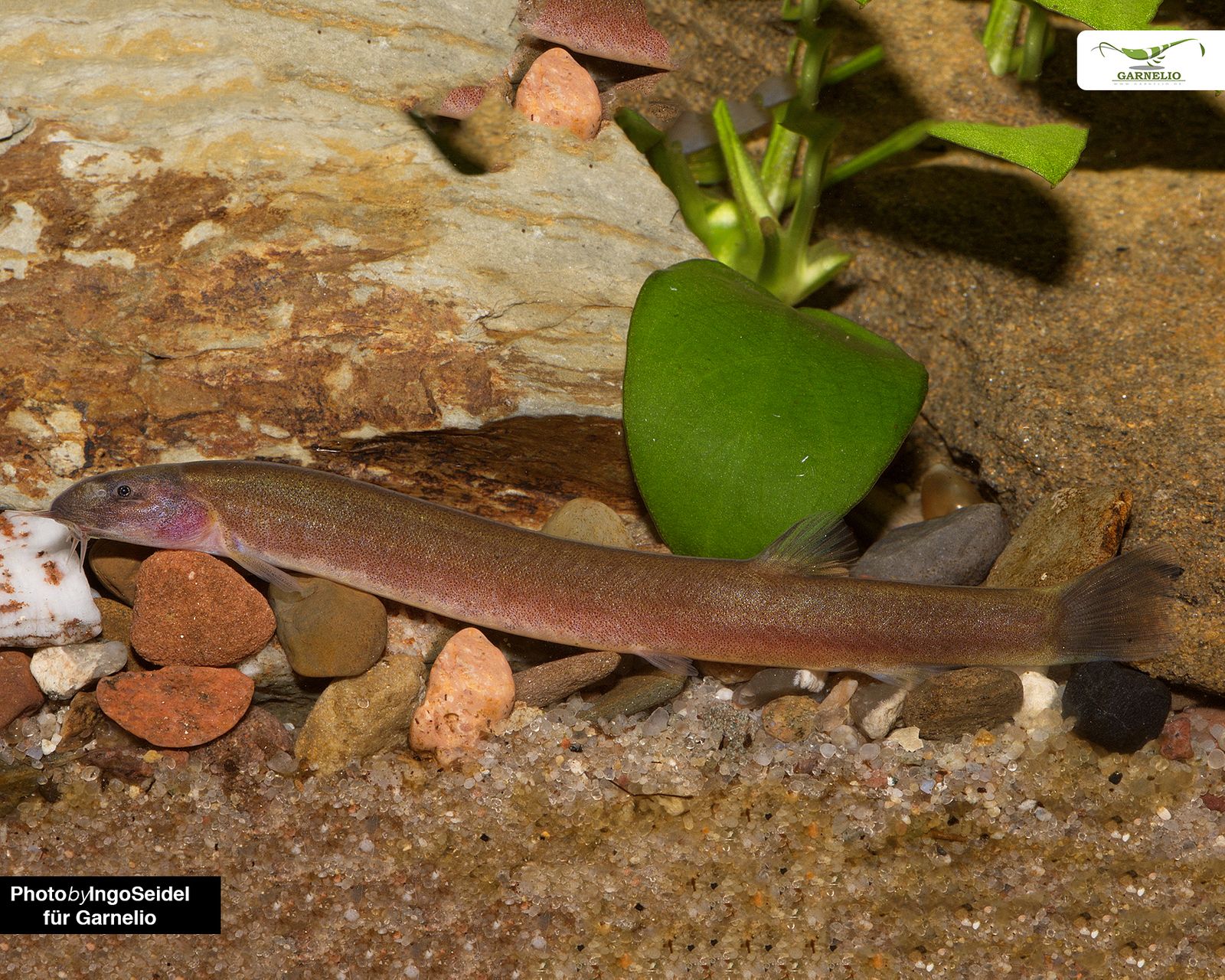
Pangio kuhlii -spotted kuhli loach (to the shop)
Great snake-like "design" that enjoys great popularity. Can also be socialised well with invertebrates from 54 litres upwards. Jumps along the aquarium glass, so the aquarium should be absolutely tight. Random breeding has already been successful.
Water values: GH 6-10, KH 2-8, pH 6.5-7, temperature 24-27°C.

Botia macrantha - loach (to the shop)
Probably the best known loach with a preference for molluscs and a great colour. Has a distinct social behaviour with hierarchy. Can grow to 30 centimetres long and 20 years old. Cannot be bred.
Water values: GH 5-20, KH 2-10, pH 6-7.5, temperature 24-28°C.

Protomyzon pachychilus - Panda Loach (to the shop)
Peaceful, small-bodied and rarely found in the trade. Ideal in company with bee shrimps and molluscs, originates from very acidic water. Habitat threatened with extinction - breeding efforts should therefore be intensively targeted.
Water values: GH up to 6, KH 0 to 3, pH 6 to 7, temperature 15 to 24 °C maximum.
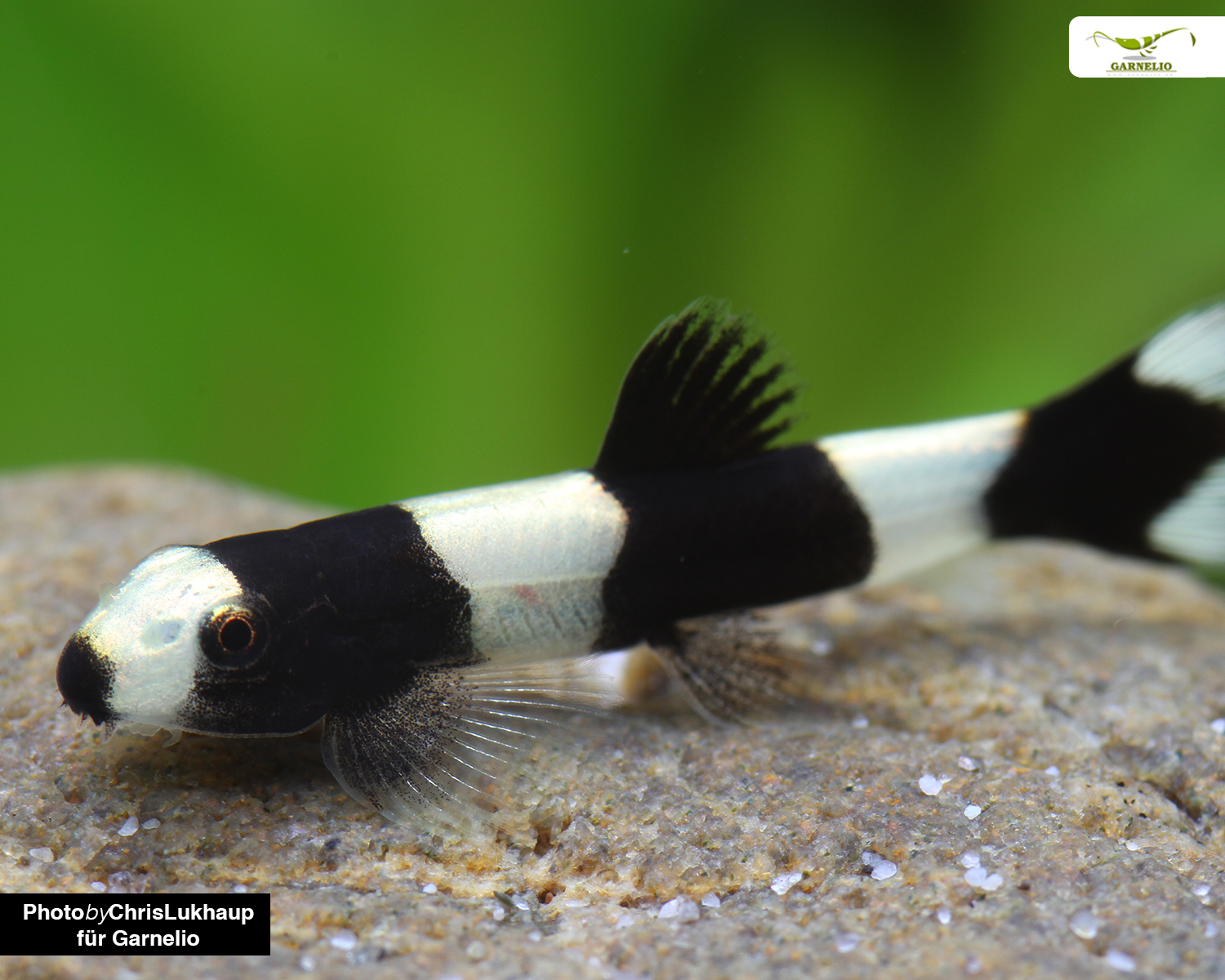
Sewellia lineolata - Magnificent fin sucker (to the shop)
Interesting appearance, almost suck themselves completely to substrates. Ideal group animals, also get along with shrimps and molluscs. Breedable!
Water values: GH up to 20, KH 0 to 8, pH 6 to 7.5, temperature 18 to 24 °C
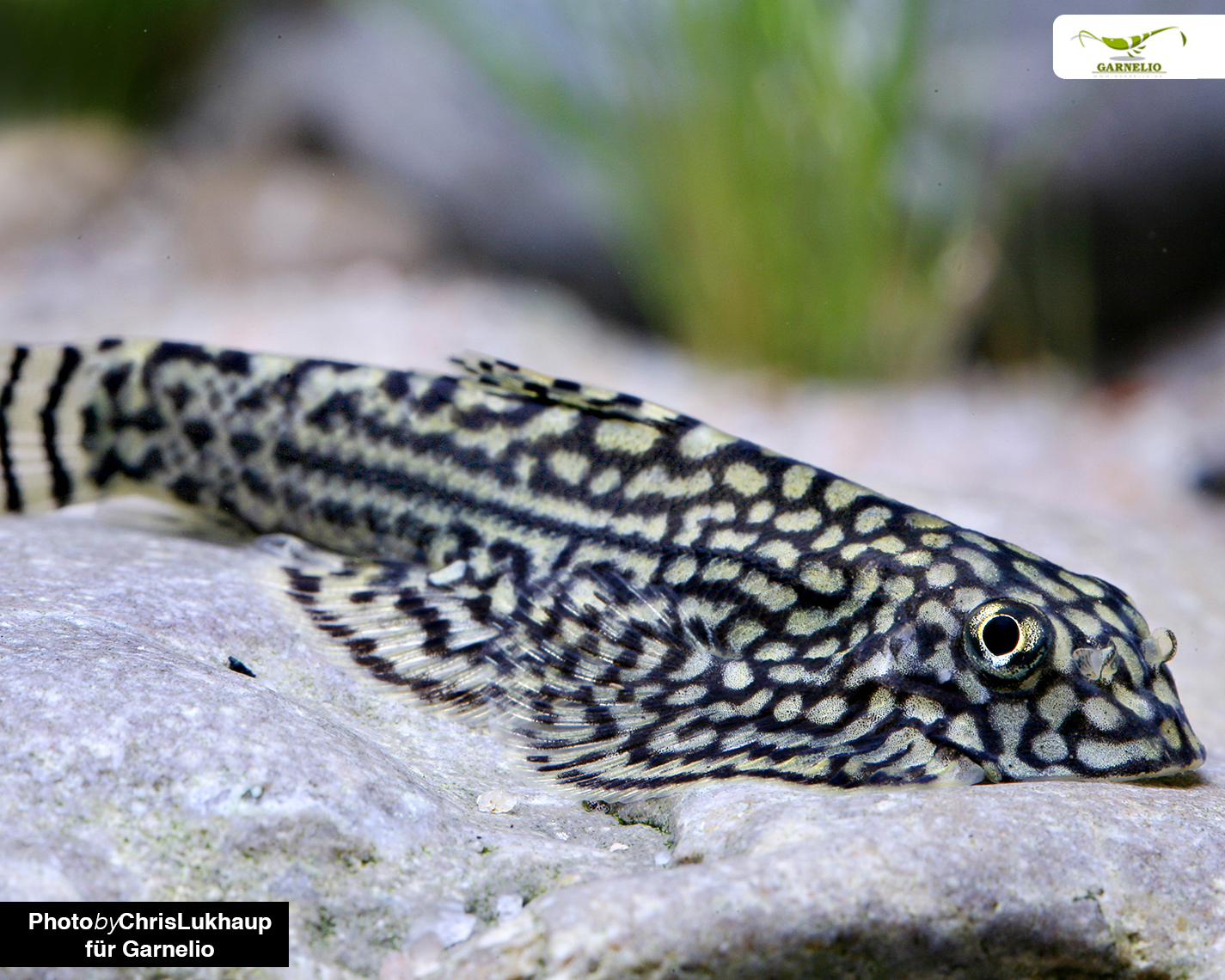
Gyrinocheilus aymonierei - Sucking loach gold (to the shop)
Classic algae eater in the aquarium, great golden colour. Can be kept together with shrimps and molluscs. Can live 21 years, becomes more territorial with age.
Water values: GH 2 to 25, KH 3 to 20, pH 6 to 8, temperature 22 to 28 °C.
